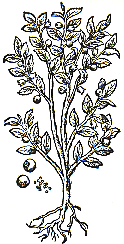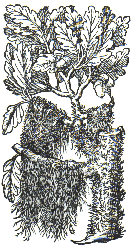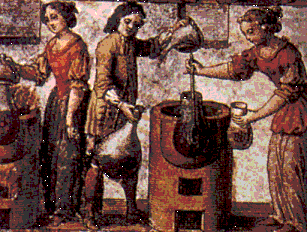 |
|
WOAD.
ISATIS TINCTORIA.
- 4 ft. Fl., yellow.
- Cornfields. May - July.
-
- formerly much used for producing
- a dark-blue dye.
|
COMMON ALKANET.
ANCHUSA OFFICINALIS.
- 2 ft. Fl., 3/8 in. Purple.
- June - July.
-
- formerly much used for producing
- a lilac dye.
|
|
 |
 |
|
BILBERRY.
WORTLEBERRY.
VACCINIUM MYRTILLUS.
- 2 ft. Pink. Berries black.
- May.
-
- shrub with alternate undivided leaves, without stippules,
and succulent fruit. provided a food source, among other berries such as
blackberry and strawberry.
|
COMMON COMFREY.
SYMPHYTUM OFFICINALE.
- 2 - 3 ft. Fl., 3/4 in. long.
- Yellow, purple, rose or white.
- Stems winged as shown.
- Watery places, river sides.
- May - September.
-
- reputed a wound-wort, and therefore anciently called "Consolida."
- root is reputed to be excellent for bandages for broken
limbs.
|
|
 |
 |
|
OAK WITH MOSS.
QUERCUS SESSILIFLORA.
flowers without peduncles (long fruit stalks). Its leaves
has long stalks.
Oak was used for its strength for buildings, furniture and
ships.
Moss provided insulation for buildings, and was used for "toilet
paper". |







